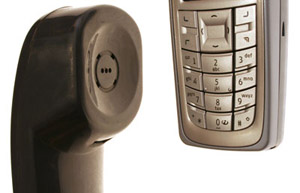All posts by Guest Contributor

Remember the new customers or subscribers you brought on last year, and how great they looked on paper? High credit score, low revolving debt—clean as a whistle, solid as a rock. How do those stellar profiles look right now, in 2011? Still solid? Or has their luster recently faded? In today’s uncertain environment, it’s both a legitimate and prudent question credit departments should often ask. Regular portfolio reviews: illuminate, eliminate Because of the financial relationship between your company and its customers, you have a right to make “soft” inquiries to uncover new credit-quality risk. Red Flag indicators include a recent bankruptcy, an increase in late payments, and other credit obligations staying past due longer. Whatever the changes are, you’re entitled to know them, and regular portfolio reviews are an effective way to illuminate (and eliminate) risk. The other side of the coin Thankfully, telecom/cable credit trends are not all gloom and doom. Many people have actually improved their scores and are good candidates for better terms, better rates and cross-sell opportunities that can increase your wallet share. Of course, once you land good customers, keeping them happy becomes paramount. Increasing the number of products or services they use can make customers “stickier” and more loyal. So if, as mentioned in my previous post, acquisition is about prospect quality (not quantity), then retention and risk reduction are about regular portfolio reviews and keeping people happy. Supplementing reviews by letting customers know you value and appreciate their business, will help them stay put when pesky competitors come knocking.

More prospects equal more profits, right? Not necessarily. But surprisingly, companies in every industry (including cable and telecom) routinely burn acquisition dollars as if it is. The reality is that only more qualified prospects can lead to more profitable campaigns, making acquisitions a clear case of quality besting quantity. But why? No substitute for quality Engaging unqualified prospects is an unprofitable exercise requiring time and resources that are better spent on those who are ready, willing and able to buy from you. Benefits of an effective acquisition strategy include greater: Resource efficiency—less time, money and energy wasted on no-payback prospects Brand loyalty and higher lifetime value—by accurately matching consumers to products they relate to and desire Profitability and less bad debt—this one is probably obvious Fishing where the (best) fish are So how should a profit-minded telecom or cable company identify highly qualified prospects and invite them into the fold? Using a credit-score threshold, where anyone possessing the target score receives an offer, is one method. The benefit is simplicity. One disadvantage is unnecessary risk, as credit score is just one factor reflecting an individual’s creditworthiness. Another possibility is analyzing your best customers’ profiles or most profitable underwriting policies and integrating profit-building criteria into your campaign. This takes a little more effort but the payback potential is higher. Tapping into available sources Many companies find public records a rich source of decisioning data. Others have discovered that adding consumer-credit information to their acquisition formula not only improves prospect quality, it also reduces on-boarding costs. Derogatory payment information, revolving debt levels or unacceptable debt-to-income ratios will all surface in the process, informing and improving your credit management decisions. (Note: using credit data to assess risk requires you to make a firm offer of credit, according to FCRA guidelines.) You’ll do a lot of prospecting in 2011, so remember: when it comes to acquiring new customers, more isn’t better. Better is better. And using reliable, high-quality data is one way to ensure the impact and return of every marketing dollar.

Experian Decision Analytics has recorded increased demand from the marketplace for service integrations with interactive voice response (IVR), a phone technology that allows for automated detection of both voice and touch–tones. In the past quarter, there has been a more than 70 percent increase in IVR interest and it continues to grow. Why is there a demand for knowledge based authentication through IVR? Besides consumer acceptance of out of wallet questions, there is a dramatic increase in the need for remote authentication and fraud analytics that are accurate, not a burden to the consumer, cost–effective for organizations and part of an overall risk based authentication approach. Consumers stay connected in a number of ways — phone, online, mobile and short message service (SMS) — and are demanding the means to remain safe without compromising convenience. Knowledge based authentication through IVR provides this safety. Organizations must consider all the tools at their disposal to keep consumer data protected while preserving and promoting a positive customer experience. Given the interactive nature of knowledge based authentication, it is quite adaptable to various customer access channels, such as IVR, and it enables full automation of both inbound and outbound authentication calls. We know from both our own experience and from working with clients that consumers are more connected, more mobile and more networked than ever before - and fraud trends demonstrate this increases risk. As consumers continue to expand online profiles and fraud artists continue to seek out victims, successful fraud prevention will become paramount to financial survival. Leveraging products already in use by combining the technology capitalizes on an existing investment and is good business.

Cybersecurity is back in the news, thanks in no small part to a number of government reports and developments with WikiLeaks. It’s also becoming increasingly important to businesses and lawmakers alike. Although not a new concern for the telecommunications industry, cybersecurity is quickly becoming a priority for the new Congress as pressure increases to develop a national plan. What should cybersecurity protect? A national cybersecurity plan would likely entail setting baseline security standards to protect critical networks – many of which are run by private organizations. For policymakers, the challenge will be to craft guidelines that protect consumer data and still allowing technological innovation. Last year, we saw a number of legislative proposals debated before Congress that would place new requirements on network infrastructure and strengthen coordination between federal regulators. So far, the proposals have been broad and have only raised additional questions. The hurdle for lawmakers will be addressing how existing data protection laws fit within new proposals in order that businesses do not face over burdensome requirements. Where does the FCC fit in? When it comes to cybersecurity, the role of the FCC is even more undefined – however that’s changing. Last summer, the FCC asked for public comments about the creation of a Cybersecurity Roadmap to identify vulnerabilities to communications networks and to develop countermeasures and solutions to cyber threats. The roadmap was first recommended as part of a broader strategy to create a National Broadband Plan that required the FCC to identify the five most critical security threats and establish a two-year plan to address them. While the Commission has accepted public comments, it’s unclear when a final Roadmap will be introduced. A national breach notification standard As part of a comprehensive plan, policymakers are also looking at what happens after a breach occurs. Currently, 46 states have passed laws requiring companies to notify consumers after a security breach. As a result, policymakers have begun to examine whether a national data breach law is necessary given the varying degrees of consumer notification. The FCC has indicated their support of a uniform law and has recommended that Congress include telecoms in the legislative discussion. Despite the uncertainty, one thing is sure: cybersecurity will be increasingly important to monitor during 2011. One way to stay current is to subscribe via email or RSS as we continue to look at the latest legislative or regulatory developments concerning the wireless and telecommunications industry. In the near future, we’ll be taking a look at recent data privacy recommendations by federal regulators and the privacy agenda of the new Congress. Meanwhile, if you’d like more information on Data Breach Notification or Fraud Management Compliance, your Experian representative can help. Let us know your concerns regarding cybersecurity and pending legislative issues so that we can address them in future posts.

By: Staci Baker There has been a lot of talk in the news about the Dodd-Frank Act lately. According to the Dodd-Frank Resource Center of the American Financial Services Association (AFSA), “The Dodd-Frank Wall Street Reform and Consumer Protection Act of 2010, which passed on July 21, 2010, is unprecedented in magnitude, and will impact every sector of the financial services industry.” The aim of the Act is to put measures in place that address the issues that led to the financial crisis. This is done by setting up new regulatory bodies, and limiting the dealings of banks and other financial institutions. For the purpose of this blog, I will focus on describing the new regulatory agencies. The Bureau of Consumer Financial Protection (CFPB), is an independent watchdog housed within the Federal Reserve. The CFPB has the authority to “regulate consumer financial products and services in compliance with federal law.”[ii] They are responsible for the accuracy of information, hidden fees and deceptive practices for consumers from within the following industries – mortgage, credit cards and other financial products. The Financial Stability Oversight Council is “charged with identifying threats to the financial stability of the United States, promoting market discipline, and responding to emerging risks to the stability of the United States financial system.”ii Through the Treasury, this council will create a new Office of Financial Research, which will be responsible for collecting and analyzing data to identify and monitor emerging risks to the economy, and publish the findings in periodic reports. These new regulatory agencies are critical to US business processes, as they will more closely monitor business practices, create new tighter legislation, and report findings to the public. The legislation that is created will decrease risk levels posed by large, complex companies, as well as address discrepancy that has been raised throughout the financial crisis. What are your views of the Dodd-Frank Act? Do you believe this is the legislation needed to stem future financial crisis? If not, what would help you and your business?

Increased incidence of “involuntary renters” According to the Mortgage Bankers Association, one out of every 200 homes will be foreclosed. The incidence of “involuntary renters” will increase as a high foreclosure rate continues, in turn, fueling the current trend of consumers who rely solely on mobile service instead of landlines. Implications for communications companies Does it necessarily follow that foreclosure equals bad risk? I don’t think so. For example, many consumers who have undergone foreclosure were subjected to a readjusted ARM that doubled or even tripled their mortgage payments. While taking a mortgage out of a consumer’s credit file can negatively impact the overall credit score, it can also potentially generate a more positive cash flow. The consumer’s new rent payments would be lower than the readjusted mortgage would have been, making the consumer a potentially good customer for communications services. Wireless companies, in particular, prefer to approve customers for regular installment plans (as opposed to prepaid plans). The goal, for nearly all communications companies, is to qualify customers for service without the need for a deposit. The key, when assessing credit risk, is to look at the total credit/payment history, not just the credit score alone. Best Practices for qualifying involuntary renters: Validate ID/authenticate. Checking the credit application information against several data sources will help avoid potential fraud. Look at the overall credit picture, especially the current debt-to-income ratio. Review third-party data for payment history. Along with the typical payment data, Experian now offers rental histories through RentBureau. This data has the ability to increase credit report accuracy for renters. Consider the basic lender mentality. Consumers who have exhibited good payment history on utilities, credit cards, and other debt in the past are likely to continue that behavior despite having lost their house to foreclosure. Considering the total credit picture allows you to rank-order customers and group them into populations that are lower risk, identifying, for example, those who can be serviced without an upfront deposit. In future posts, I’ll provide some guidance for rank-ordering customers as to their credit-worthiness.

In an attempt to out-innovate competitors, today’s communications companies seem busier than ever. The number of new products, services, devices and bundles continues to skyrocket, giving consumers more shiny new options than ever before. A double-edged sword More choices means greater opportunity to cross-sell, upsell or otherwise optimize customer value. But there is also increased risk, due to process or information gaps between internal acquisition, billing, account management and collections teams. There are also threats from the outside. Avoid being hit by “cyclers” These include hard-to-monitor, multiple-account households, and high-risk account “cyclers” who attempt to game the system by manipulating personal data; for example, providing different information when opening an account, buying a device or activating service. Undetected, such activity can severely impact corporate profitability. Fortunately, you can gain a clearer picture of both positive and negative activity by using assets and resources you already own. Extra benefits. No extra cost. The first step is working with IT to better mine internal data by linking disparate databases together (tips and best practices will be presented in future posts). This will give you a holistic view of all accounts. Experian recently did this with greater-than-expected success. In a similar effort, one utility we know identified more than $2.5 million in uncollected bad debt from current, active customers. What benefits can you expect? Besides gaining insight into driving the full value of multi-product customers, linking together internal data sources also enables you to: Illuminate resell/cross-sell opportunities and unfulfilled revenue potential Mitigate risk by identifying low value, high risk customers, and fraudulent behaviors Help in-house credit professionals “bridge the gap” with marketing and work in a more collaborative and integrated fashion Improve the customer experience across sales and support Best practices yield best results You already own the data you need. The secret to success is linking it together and putting it to work—without burdening already overworked teams. A structured set of best practices can make it happen. So what say you? What challenges does your communications company face with regard to customer data?

In the communications industry, effective acquisition is a multi-step process, best begun by asking (and accurately answering) simple, but critical questions: Who are our best prospects? Where can we find them? What should we offer them and how? Of course, the “why” is obvious—beating competitors to the punch. The similarities of today’s increasingly undifferentiated products and services make attracting high-quality customers more critical than ever. On the surface, the “who” seems equally straightforward. But it’s surprising how many communications companies still blanket the nation with ads and offers without knowing whom they want to reach or which messages to lead with. This brings us to the “how” of effective acquisition. Banks get it right Banks provide a good acquisition model. In these days of tight budgets and high expectations, most would never dream of investing in a campaign without first creating a well-defined, data-driven segmentation strategy. To get the results they want, institutions usually establish some credit-score threshold, check past payment history and assess other factors and behaviors, before starting up their marketing machine. Not surprisingly, the rewards for this foresight often include higher response rates, lower costs and greater value per promotional dollar. What’s next? Once you zero in on a fresh crop of qualified prospects the “whats” come next: what’s the best marketing channel? What products or services should we offer? What terms? Again, clean historic data, combined with up-to-date information from surveys and questionnaires can reveal surprising insights into why customers choose your company or offer over your competitors’. In communications, as in banking, reliable data is a proven source for answers to a whole slew of customer-acquisition questions. But does it offer similar value in other phases of customer lifecycle management? And if so, how? Funny you should ask. Because that’s exactly what future posts here will cover, so please check back often.

Cell phone use on the rise A Wikipedia list of cell phone usage by country showed that as of December 2009, the U.S. had nearly 286 million cell phones in use. In parallel, a recent National Center for Health Statistics study found that one in every seven homes surveyed received all or almost all their calls on cell phones, even though they had a landline. Study results further indicated, one in four homes in the U.S. relied solely on cell phones. This statistic highlights these households had no land line at all during the last half of 2009. Since this time, the number of households that fall within this category have increased 1.8 percent. Implications for communications companies The increasing use of cell phones, coupled with the decreasing use of landlines, raises some very important concerns for communications companies: The physical address on file may not be accurate, since consumers can keep the same number as they jump providers. The increased use of pre-paid cell phones shines a new light on the growing issue that contact numbers are not a consistent means of reaching the consumer. These two issues make locating cell phone-only customers for purposes of cross-selling and/or collections an enormous challenge. It would certainly make everyone’s job easier if cell phone providers were willing to share their customer data with a directory assistance provider. The problem is, doing so, exposes them to attacks from their competition and since provider churn rate concerns are at an all-time high, can you really blame them? Identifying potentially risky customers, among cell phone-only consumers, becomes more difficult. Perfectly good customers may no longer use a landline. From a marketing point of view, calling cell phones for a sales pitch is not allowed, how then do you reach your prospects? What concerns you? Certainly, this list is by no means complete. The concerns above warrant further discussion in future blog posts. I want to know what concerns you most when it comes to the rise in cell phone-only consumers. This feedback will allow me to gear future posts to better address your concerns.

By: Staci Baker According to Wikipedia, mobile banking is defined as, “a term used for performing balance checks, account transactions, payments, credit applications, etc. via a mobile device such as a mobile phone or Personal Digital Assistant (PDA).” However, as several large lenders and phone carriers test mobile banking and mobile payments, there is still much to be deciphered. Will it help businesses compete? Is it safe for a consumer? Should a bank offer a mobile solution; and if so, what precautions will they need to take to ensure their customer’s information, i.e. fraud, consumer identity? Peter Garuccio, spokesman for the American Bankers Association in Washington D.C., noted that “various experts predict that some 20 million people may be banking via cell phone this year, and that number is projected to skyrocket to 50 million by 2013.” And, according to a mobile payment study by Juniper Research ,“Combined market for all types of mobile payments is expected to reach more than $630B globally by 2014.” For the purpose of this blog, I will focus on the mobile banking solution, and questions to consider before entering into the mobile banking arena. Mobile banking today is akin to online banking a few years ago. It’s new, getting a lot of press, late adopters want more information, while the early adopters are already participating and it appears to be on the verge of taking over more conventional banking and payments. Before entering into the world of mobile solutions, there are a few things to consider: How will new regulations, such as the Durbin Amendment to the Frank-Dodd Act (a new Interchange fee proposal), affect implementation and usage? The current average interchange fee is between $1 and $1.30, the new cap at $.12 will reduce the charges by up to 90%.While the interchange fee proposal will not be finalized until after February, it is not known how the new “swipe fee” legislation will affect mobile solutions. If the new amendment directly affects debit cards only, mobile solutions can become a new revenue stream for many lenders. As more information becomes available regarding the Durbin Amendment, I will relay additional details and implications. What fraud prevention solutions do you have in place? Fraud is an issue in all industries; therefore utilizing fraud best practices specific to your market, or identifying fraud trends is essential in keeping retailers, consumers and your company safe. As consumers replace the need for a wallet with a phone, identity theft can become an issue. This is especially true of phones with minimal security, or if their phone gets into the hands of a hacker. Therefore companies can initiate an identity theft prevention program to raise awareness in consumers and retailers. As well as implement new internal processes and requirements. As we delve further into an IT-led economy, businesses will continually need to adjust how they do business in order to meet consumer demand, as well as finding new revenue streams. I am curious, how many businesses have already begun to implement a mobile solution, and what issues or results have you already seen? If you have not already implemented a mobile solution, is this in your planning for the upcoming year?

By: Kari Michel Lending institutions are more challenged today than ever before when assessing credit risk to find creditworthy consumers. Since 2006, the start of the housing bust and recession, consumer’s overall creditworthiness has deteriorated, especially those consumers who once had a high score (low risk). “For example, a study earlier this year by VantageScore® Solutions LLC found that the probability of serious delinquency, defined as nonpayment for 90 days or more, had increased by 417 percent among “super prime” borrowers between June 2007 and June 2009. Default risk during the same period rose by 406 percent for the second-highest rated category of “prime” consumers, and nearly doubled for those at the “near prime” scoring level.”* The VantageScore® credit score model is one example of a credit risk model that was recently redeveloped to capture the changing consumer behavior of repayment. The development data set included 45 million consumer credit profiles for the time period of 2006 to 2009. The VantageScore® credit score will be released for lenders use January 2011. *Source: The Washington Post, “Walk-aways leading to big changes for all borrower’s credit score, November 5, 2010 Link for article: http://www.washingtonpost.com/wp-dyn/content/article/2010/11/05/AR2010110502133.html

By: Kristan Frend According to the 2011 Identity Theft Assistance Center Outlook (ITAC), new forms of small business identity theft are emerging. This shouldn’t be a surprise that criminals view small business accounts as a lucrative funding source. What is surprising is that the ‘new’ form of small business identity theft consists of the U.S. Postal Inspection Service reporting a surge in criminal rings using small business information from stolen mail, check writing software and other tactics to counterfeit checks. That’s the new wave of small business identity theft??? I consider this one of the least sophisticated types of fraud that can easily be eliminated by small business owners not leaving mail unattended. Reading this report makes me realize that we have a long way to go in identifying and reporting the more sophisticated types of small business fraud. As I’ve mentioned before, the industry has come a long way in advancing consumer fraud solutions. Yet, as fraud has migrated into business accounts, we as an industry still have a ways to go in reporting the latest business fraud trends and tracking statistics. I’m adding this to my wish list for 2011… What’s on your wish list? On a side note, I’ve noticed nearly all of the articles posted in our blog include no reader comments. I’d like to think that this means our readers are too busy to add comments and/or our articles are so well-written that they answer all of your questions. One can dream right? Seriously though, as we approach 2011 and plan our topics, we’d love to hear from you- if you can think of any topic you’d like us to cover more in depth, please let us know.

By: Kristan Frend As my colleague Margarita Lim discussed in her December 3rd article, the SSA announced that it will change how social security numbers (SSNs) will be issued, with a move toward a random method of assigning SSNs. For organizations that currently incorporate the validation of an applicant’s SSN issue date and state as a part of their risk-based decisioning, they will lose this piece of applicant authentication post-randomization. But there is some good news - first, this validation piece won’t be entirely terminated on day one of the SSN randomization for organizations. All the change means is that the newly issued SSNs will be randomized. In other words, the only SSNs that the issue data and state won’t be validated on day one are the SSNs that have just been issued to the recently born or immigrants. Given that its likely newborns won’t be applying for credit for another 18 years, the bulk of the newly issued SSNs that organizations will see for a while are those belonging to adults who were recently issued a SSN…A growing number of applicants, but not the majority of applicants. The other bit of good news is this may actually be a good thing for all of us in the long run. While we’ll end up losing the ability to validate an applicant’s SSN issue data and state, the criminals will be at an even greater disadvantage. Consider this- Last year researchers* were able to “identify all nine digits for 8.5 percent of people born after 1988 in fewer than 1,000 attempts. For people born recently in smaller states, researchers sometimes needed just 10 or fewer attempts to predict all nine digits.” I don’t expect this change to drastically reduce third party fraud rates but over time it should eliminate one component of identity theft and ultimately benefit an organization’s Customer Information Program. *The National Science Foundation, the U.S. Army Research Office, Carnegie Melon Cylab, and the Berkman Faculty Development Fund provided support for the research. To view the entire study, please visit http://www.pnas.org/content/106/27/10975.full.pdf+html.

By: Ken Pruett The majority of the customers I meet with use some sort of Velocity Checks to assist with their Fraud and Compliance process. However, there are still quite a few that do not, especially when opening up New Business Accounts. Historical data checks have proven to be an effective form of identity theft prevention for both Consumer fraud and Commercial Fraud. We see scenarios where a perpetrator will have one successful penetration of a business and opens up a fraudulent account. They then try and replicate this against the same business. All of the information may be different, with the exception of one element, often the phone number. Without velocity checks, this may not be identified at the time the account is being opened. More sophisticated rings try to be more creative in their fraudulent attempts. They may gain access to a consumers information and then go and apply at a variety of entities. They are more careful, so they never attempt to target the same business twice. They are aware that many companies have velocity checks, so they do not want to take a chance of having their information questioned. At a minimum, the use of in-house velocity checks should be a standard process for you fraud detection measures. Typical data elements to check against are; name (business or consumer), address, phone number, and Social Security Number. A fraud best practice would be to use a tool that provides velocity checks and incorporates the information into a fraud prevention tool. There are tools that provide checks across multiple businesses and this typically provides the best level of protection. By looking at inquiry information across multiple businesses, you are able to help prevent being a victim of some of the more sophisticated rings. Don’t find yourself being the easiest target. Once you get hit, it could snowball and you may be victimized multiple times. We all know there is no way to stop all of the fraud, but let’s not make it too easy on the perpetrators. Try and find a way to use some sort of velocity checks in your process to at least minimize your fraud risk.

By: Andrew Gulledge Bridgekeeper: “What is the air-speed velocity of an unladen swallow?” King Arthur: “What do you mean? An African or European swallow?” Here are some additional reasons why the concept of an “average fraud rate” is too complex to be meaningful. Different levels of authentication strength Even if you have two companies from the same industry, with the same customer base, the same fraudsters, the same natural fraud rate, counting fraud the same way, using the same basic authentication strategies, they still might have vastly different fraud rates. Let’s say Company A has a knowledge-based authentication strategy configured to give them a 95% pass rate, while Company B is set up to get a 70% pass rate. All else being equal, we would expect Company A to have a higher fraud rate, by virtue of having a less stringent fraud prevention strategy. If you lower the bar you’ll definitely have fewer false positives, but you’ll also have more frauds getting through. An “average fraud rate” is therefore highly dependent on the specific configuration of your fraud prevention tools. Natural instability of fraud behavior Fraud behavior can be volatile. For openers, one fraudster seldom equals one fraud attempt. Fraudsters often use the same techniques to defraud multiple consumers and companies, sometimes generating multiple transactions for each. You might have, for example, a hundred fraud attempts from the same computer-tanned jackass. Whatever the true ratio of fraud attempts to fraudsters is, you can be confident that your total number of frauds is unlikely to be representative of an equal number of unique fraudsters. What this means is that the fraud behavior is even more volatile than your general consumer behavior, including general fraud trends such as seasonality. This volatility, in and of itself, correlates to a greater degree of variance in fraud rates, further depleting the value of an “average fraud rate” metric. Limited fraud data It’s also worth noting that we only know which of our authentication transactions end up being frauds when our clients tell us after the fact. While plenty of folks do send us known fraud data (thus opening up the possibility of invaluable analysis and consulting), many of our clients do not. Therefore even if all of the aforementioned complexity were not the case, we would still be limited in our ability to provide global benchmarks such as an “average fraud rate.” Therefore, what? This is not to say that there is no such thing as a true average fraud rate, particularly at the industry level. But you should take any claims of an authoritative average with a grain of salt. At the very least, fraud rates are a volatile thing with a great deal of variance from one case to the next. It is much more important to know YOUR average fraud rate, than THE average fraud rate. You can estimate your natural fraud rate through a champion/challenger process, or even by letting the floodgates open for a few days (or however long it takes to gather a meaningful sample of known frauds), then letting the frauds bake out over time. You can compare the strategy fraud rates and false positive ratios of two (or more) competing fraud prevention strategies. You can track your own fraud rates and fraud trends over time. There are plenty of things you can do to create standardize metrics of fraud incidence, but good heavens for the next person to ask me what our average fraud rate is, the answer is “No.”